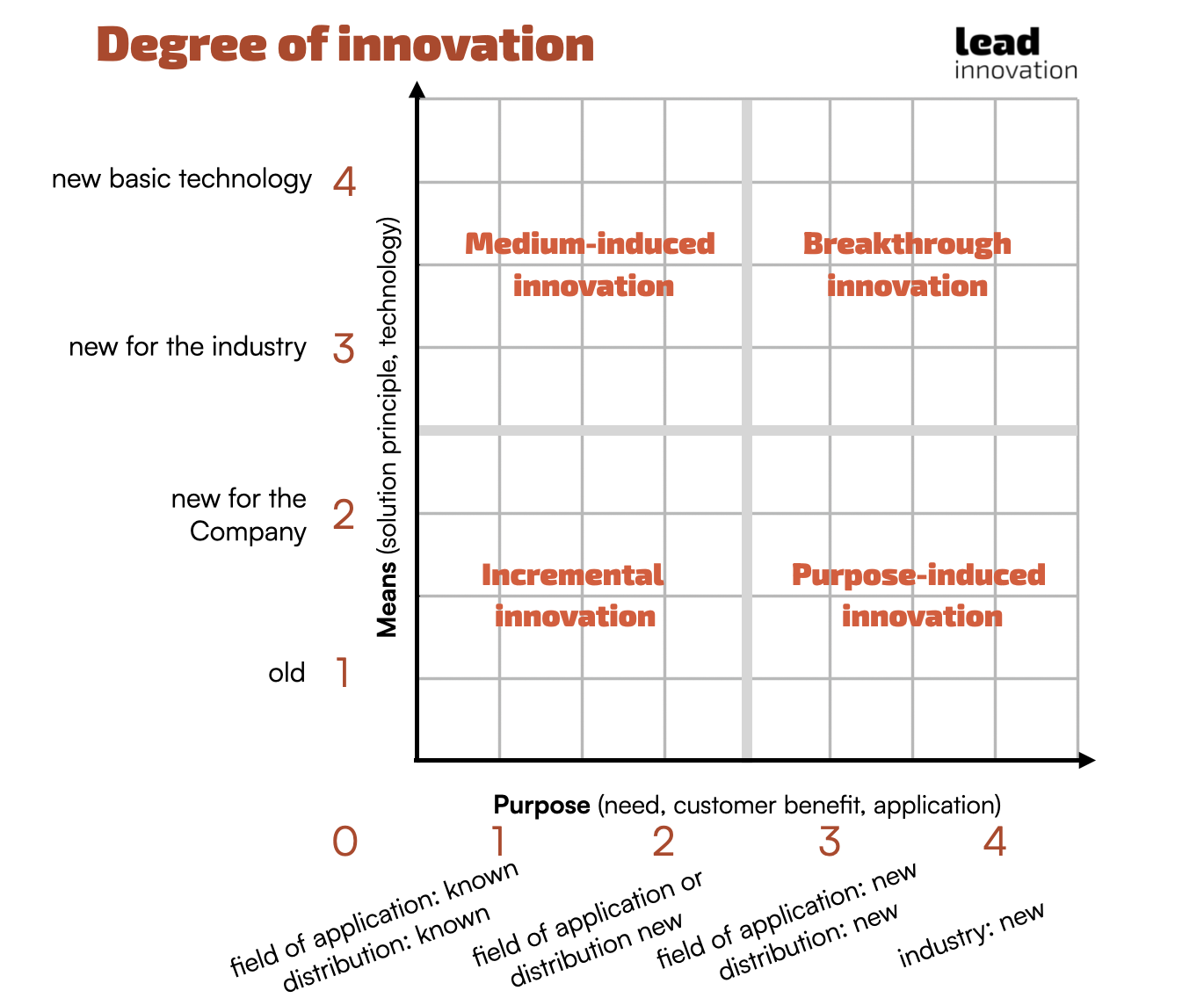3 important innovation key performance indicators
"Only what you can measure can be improved." This bronze management rule also applies to your innovation management, of course. However, although your investment in new developments must naturally be reckoned with, their success is not so easy to sum up. In this blog entry, you will read what you should consider when applying innovation indicators, and what four values you should really take seriously.

There are many variables that measure your innovation activity. The German innovation adviser Klaus Reichert lists the 100 most important of these key figures in his reference book. This large set of formulas suggests that the input, the output, and the objectives of innovation management can be represented quite well in figures. But this appearance is deceptive, for two reasons:
- If you pay attention to many measured values, you lose the overview. The true value of your innovation activities will remain hidden.
- You must define the variables that are applied to these formulas individually and precisely for your business. Otherwise you will get results that say nothing at the same time.
These three innovation key performance indicators have proved their worth
The first challenge on the way to the key figure can be solved relatively easily. Look for a few key figures from the big bunch of possibilities. These should match your business and innovation management. The combination of the following three parameters has already proven itself in practice for many companies, so we present them in more detail:
Innovation rate = revenue share of innovations / total turnover * 100
This key figure represents your innovation activity in relation to your sales. And it also shows whether your new developments are successful on the market or not, because it measures the sales you already achieved with the innovations. You can not measure how many new developments you successfully place on the market.
Innovation rate = number of innovations / number of products * 100
This size shows how important your business is to innovation, because you relate the number to your entire range. But she does not say anything about the success of your new developments. However, together with the innovation rate, you already get a very good picture of your own innovation and success. However, both metrics do not answer the question of what you mean by an innovation.
Degree of innovation = newness of the purpose-medium combination
 With this formula, developed by renowned German economist Jürgen Hauschildt, you can now specify how new your development is. According to Hauschildt, the novelty of an innovation must first be perceptible. Purpose and means must be combined in a previously unknown form. The purpose could be for the drive of a car, the means for the fuel used. If both are distinctly different from what is known, then it is a breakthrough innovation. If the difference to existent is rather recognizable only for the innovator itself, then one speaks at best of an incremental innovation. Or it is just a product improvement - think about the facelift of a car model.
With this formula, developed by renowned German economist Jürgen Hauschildt, you can now specify how new your development is. According to Hauschildt, the novelty of an innovation must first be perceptible. Purpose and means must be combined in a previously unknown form. The purpose could be for the drive of a car, the means for the fuel used. If both are distinctly different from what is known, then it is a breakthrough innovation. If the difference to existent is rather recognizable only for the innovator itself, then one speaks at best of an incremental innovation. Or it is just a product improvement - think about the facelift of a car model.
Innovation portfolio
This is not a measure in the narrower sense, but an exact analysis of your product range. How old are your products? How much does each individual contribute to the overall result? This analysis can already show exactly which and how many products you have to develop in order to defend or expand your market position.
Define your variables exactly.
However, the practical application of these key figures is not easy: as already mentioned, the variables require an exact and conclusive definition so that the formulas also provide meaningful figures for your company. So before you start working with numbers, you should have answers to these questions:
1. What exactly is an innovation?
Determining the degree of innovation according to Professor Hauschildt's model described above can help you define what is and what is not an innovation. However, there are still many other, sometimes highly complex approaches in science. A definition of innovation that fits your business can only be done by you alone. The key questions are: what do your customers, your competitors and ultimately your company consider themselves as innovation?
2. When is a new development an innovation?
An innovation is Invention plus market success. You must already have achieved a market success with your new development. Everything else is an invention that can ultimately turn out to be a flop. If you already take into account every new development that you bring to the market, then the results of your investment investment can be nice. Your company would have an unusually high rate of innovation, for example, because the number of innovations is proportional to the number of all its products. They can achieve a very high innovation rate, even if all their investments turn out to be a flop. Your innovations should therefore only be described as innovations if you have at least the effort for your development and your launch again.
3. How long does a new development count as innovation
Not only the question of when a new development is considered an innovation is important for the calculation of innovation figures. Also the answer to the question, until when a new development as innovation applies, is decisive for key figures. Is a product so long an innovation until it is replaced by a better one? Is a new development in your eyes as long as innovation until the patent expires? Do you define your definition of innovation in relation to the product cycle, and let a new product be regarded as innovation by the end of the maturity phase?
4. How do you calculate the turnover that your innovations generate?
If you have fixed the definition of innovation for yourself, then you should consider another important variable. After all, the sales generated by new developments are, despite a watertight definition of innovation, also an elastic dimension. The revenue that innovations directly contribute to the company's results is easily measurable. But how would the proceeds of your existing portfolio have developed if your company had not brought the innovations to the market?
To illustrate this problem with an example: A car manufacturer launches a successor model for his most successful model. This successor model leaves its predecessor in the eyes of the buyers but looks old, but can not reach its sales figures. The manufacturer has launched an innovation because the new model has at least contributed the cost of development and launches. Nevertheless, innovation did not have a positive effect on the company's results because it stalled the sales of its predecessor.
Conclusion: You should pay attention to these three innovation key performance indicators
Figures are popular and helpful as a basis for decisions in strategic innovation management. However, you always have to ask how these numbers came about and what they ultimately measure or do not measure. In order to manage your innovation management and measure your innovative power using key figures, you have to answer many questions for yourself and your company. Note also that the innovation characteristics of different companies are not comparable. Because each company defines "innovation" differently. Only the number of registered patents is an objective measure. This, however, says nothing at all about whether the innovations of a company also arrive at the market or not.
So, work with key figures, but do not rely entirely on them. For example, Mark Twain said, "A man with a new idea is a spinner until the idea proves to be successful." Sometimes it takes a bit longer, as James Dyson proved: he needed 5,127 prototypes to ultimately invent the dustbag free vacuum cleaner for which the company is world-renowned today.











